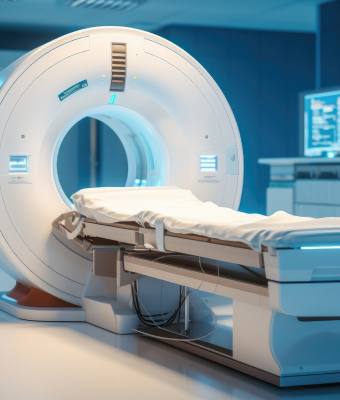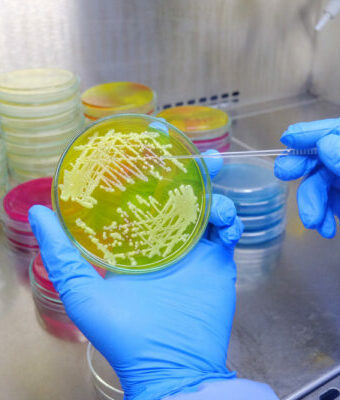Pitt-Hopkins Syndrome (PTHS) is an extremely rare genetic neurological disorder characterized by distinct facial features, severe intellectual disability, global developmental delay, speech impairments, recurrent seizures, and respiratory issues.1 Individuals with PTHS may also exhibit ataxia (lack of coordination), repetitive purposeless hand movements, sleep disturbances, nearsightedness, and frequent constipation. 1,2 Behavioral abnormalities are common, though individuals with PTHS are often sociable and cheerful. Some symptoms may overlap with autism spectrum disorder. Notably, the severity of PTHS can vary among affected individuals. Spontaneous mutations in the TCF4 gene primarily cause PTHS and are not typically inherited from family members.3
This article will delve into the key neurodevelopmental features of PTHS and explore the latest insights and interventions available for managing this complex disorder. As healthcare professionals, it is essential to stay up-to-date with the latest research and clinical practices to provide optimal care for PTHS patients.1
Understanding Pitt-Hopkins Syndrome
Children affected by Pitt-Hopkins syndrome (PTHS) often exhibit a range of intellectual disabilities. The primary cause of this condition is spontaneous mutations in the TCF4 gene, and it is not associated with familial inheritance. While PTHS was first documented in medical literature in 1992, the genetic link was only confirmed in 2008. Nonetheless, the exact mechanisms behind this disorder remain incompletely understood. It’s important to recognize that not all PTHS children will display all the symptoms outlined below. 2,4

PTHS is typified by intellectual disability, developmental delays, respiratory issues, recurring seizures, and distinctive facial features. PTHS arises due to mutations in the TCF4 gene situated on chromosome 18. 1,3 These mutations lead to a loss of TCF4 protein function, integral to brain development and operation. The syndrome presents a distinct clinical profile comprising intellectual disability, respiratory irregularities, facial anomalies, and developmental delays.2
The substantial intellectual disability experienced by PTHS individuals is one of the most challenging aspects of this condition. This level of cognitive impairment often necessitates lifelong care and support. Understanding the mental and behavioral traits in PTHS is vital for crafting appropriate intervention strategies.4
Incidence

The prevalence of this disorder was initially uncertain. Currently, approximately 500 individuals have been globally identified as affected. The Genetic and Rare Disease Information Center in the U.S. has noted that affected children often present with misdiagnosed or undiagnosed symptoms, making it challenging to determine the precise extent within the general population. This disorder can impact individuals of all genders and may affect children from diverse racial and ethnic backgrounds.3,5
Cognitive and Behavioral Profile3,4,5
- Intellectual Disability: Individuals with PTHS typically exhibit moderate to severe intellectual disability. Their cognitive abilities vary widely, with some individuals showing better functional communication skills than others. Understanding each patient’s specific cognitive strengths and weaknesses is essential for tailoring interventions.
- Behavioral Challenges: PTHS patients may display challenging behaviors, including self-injury, aggression, and repetitive movements. These behaviors can be extremely difficult for both the patient and their caregivers. Behavior management strategies and interventions should be developed in collaboration with specialists in behavioral therapy.

- Communication Difficulties: Speech and language difficulties are common in PTHS. Augmentative and alternative communication (AAC) systems, such as communication boards and devices, can be invaluable tools to enhance communication for non-verbal or minimally verbal individuals.
- Sensory Processing Issues: Many individuals with PTHS exhibit sensory processing issues, which can impact their daily functioning. Occupational therapy and sensory integration techniques can help manage these challenges.
Medical Considerations4

In addition to cognitive and behavioral aspects, there are several medical issues that individuals with PTHS often face, including:
- Breathing Abnormalities: Many PTHS patients have breathing abnormalities, such as hyperventilation and apnea. Continuous monitoring and management of respiratory function are crucial.
- Seizures: Epilepsy is common in individuals with PTHS. Antiepileptic medications and close monitoring are typically required.
- Gastrointestinal Problems: Feeding difficulties, constipation, and gastroesophageal reflux are common in PTHS. Nutritional management and gastroenterology consultation may be necessary.
Insights from Neuroimaging2,6
Recent advances in neuroimaging have provided valuable insights into the brain structure and function of individuals with PTHS. MRI studies have revealed structural abnormalities in the brain, including a reduced size of the corpus callosum, a bundle of nerve fibers connecting the brain’s two hemispheres. These insights help us better understand the neurological underpinnings of PTHS and can guide treatment strategies.

Functional MRI (fMRI) studies have shown altered brain activation patterns in response to cognitive tasks in individuals with PTHS. These findings can inform the development of cognitive interventions and therapies tailored to the unique neurological profiles of PTHS patients.
Early Intervention and Therapies3,4
Early intervention is crucial for optimizing outcomes for individuals with PTHS. Multidisciplinary teams should collaborate to develop personalized treatment plans, including pediatricians, neurologists, geneticists, speech therapists, occupational therapists, and behavioral specialists.
- Speech and Language Therapy: Speech therapy is essential to address communication difficulties. Augmentative and alternative communication methods can be introduced as needed.
- Behavioral Interventions: Behavioral therapies, such as Applied Behavior Analysis (ABA), can help manage challenging behaviors and improve daily functioning.
- Occupational Therapy: Occupational therapy can address sensory processing difficulties and enhance motor skills.
- Pharmacological Interventions: Medications may be prescribed to manage specific symptoms, such as seizures or mood disorders.
- Educational Support: Early enrollment in special education programs focusing on individualized education plans (IEPs) is crucial to support the cognitive and academic development of PTHS children.

Constipation is a common issue in Pitt-Hopkins disorder. Standard protocols are used to manage constipation. Hyperventilation or apneic attacks can be managed with medications like acetazolamide.1,4 Seizures can often be controlled with anticonvulsants. Ophthalmic glasses can help resolve nearsightedness in most children with PTHS, while some may require eye surgery. Regular eye assessments are recommended.2
Research and Potential Therapies
While there is no cure for PTHS, ongoing research offers hope for developing targeted therapies. Investigational studies explore gene therapy approaches to restore TCF4 function and potentially reverse some neurological deficits associated with PTHS.3,5
Additionally, researchers are investigating potential drug therapies to manage specific symptoms and improve quality of life. Clinical trials and collaborations with research institutions can provide PTHS patients with access to cutting-edge treatments.6
Conclusion1,2,3,4,5,6
Pitt-Hopkins Syndrome presents complex neurodevelopmental challenges requiring a comprehensive and multidisciplinary approach to care. Healthcare professionals must stay informed about the latest research and interventions to provide the best possible support for PTHS patients.
Understanding the cognitive and behavioral profile of PTHS, addressing medical issues, and early intervention are essential components of care. Insights from neuroimaging are shedding light on the neurological underpinnings of the syndrome, while ongoing research offers hope for targeted therapies in the future.
As we continue to advance our knowledge of Pitt-Hopkins Syndrome, our ability to enhance the quality of life for individuals with this condition will improve. Collaboration among healthcare providers, researchers, and families is key to optimizing the care and outcomes for those affected by PTHS.
References
- Suria Prakash SN. Pitt-Hopkins Syndrome in Children. Pondicherry Journal of Nursing. Volume 13 | Issue 4 | Year 2020.;13(4):93–95. https://doi.org/10.5005/jp-journals-10084-12140.
- Goodspeed K, Newsom C, Morris MA, Powell C, Evans P, Golla S. Pitt-Hopkins syndrome: a review of current literature, clinical approach, and 23-patient case series. Journal of Child Neurology. 2018;33(3):233–244. DOI: 10.1177/0883073817750490.
- Bedeschi MF, Marangi G, Calvello MR, Ricciardi S, Leone FPC, Baccarin M, et al. Impairment of different protein domains causes variable clinical presentation within Pitt-Hopkins syndrome and suggests intragenic molecular syndromology of TCF4. European Journal of Medical Genetics 2018;60(11):565–571. DOI: 10.1016/j.ejmg.2017.08.004.
- De Winter CF, Baas M, Bijlsma EK, van Heukelingen J, Routledge S, Hennekam RCM. Phenotype and natural history in 101 individuals with Pitt-Hopkins syndrome through an internet questionnaire system. Orphanet Journal of Rare Diseases 2016;11(1):37. DOI: 10.1186/s13023-016-0422-2.
- Rannals MD, Page SC, Campbell MN, Gallo RA, Mayfield B, Maher BJ. Neurodevelopmental models of transcription factor 4 deficiency converge on a common ion channel as a potential therapeutic target for Pitt-Hopkins syndrome. Rare Diseases 2018;4(1): e1220468. DOI: 10.1080/21675511.2016.1220468.
- Marangi G, Zollino M. Pitt-Hopkins syndrome and differential diagnosis: a molecular and development, cognition, and behavior in Pitt-Hopkins syndrome. Developmental Medicine & Child Neurology 2012;54(10):925–931. DOI: 10.1111/j.1469-8749.2012.04339. x.






